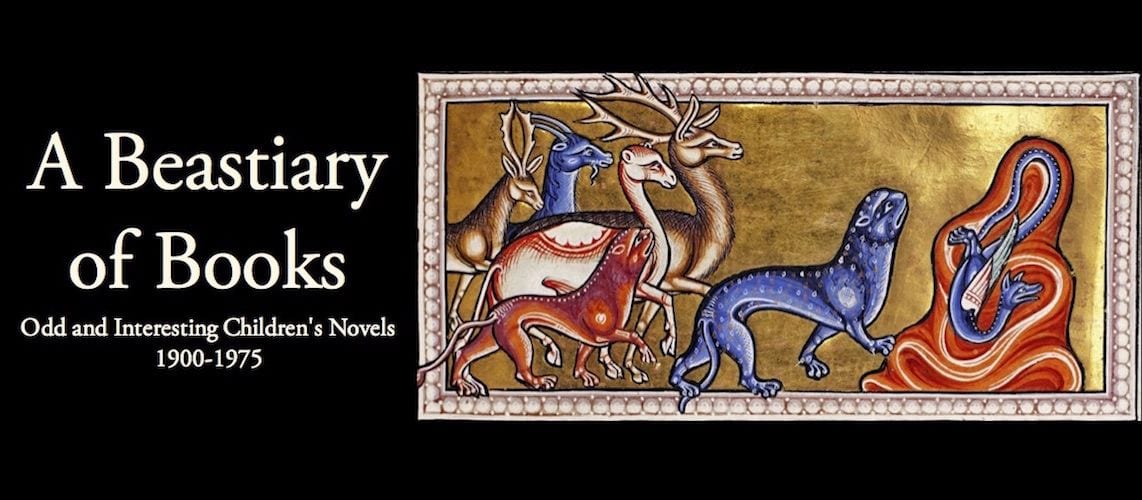 Beyond the Pawpaw Trees is a strange little book, broadly fitting into the Nonsense category, but really somewhere between a fable and a children’s version of magical realism.
Beyond the Pawpaw Trees is a strange little book, broadly fitting into the Nonsense category, but really somewhere between a fable and a children’s version of magical realism.
Anna Lavinia, who has never been beyond the walled garden of her home, is sent by train to visit an aunt, during which journey she meets odd characters, experiences peculiar events, and (yes) hears and recites a great deal of nonsense poetry. Unlike many nonsense books, the odd things that happen (impossible, but not exactly magic), happen in her own real world, a place where a hedgehog can blow over the wall, a train track that appears to converge at the horizon really does, a mirage seen floating just above the desert sand can be climbed onto and lived in, and a father who chases rainbows really does find all the pots of gold and brings them home. In one scene, she comes to a cliff edge and discovers she can float down gently on the warm desert air. (This moment is reminiscent of Alice falling down the rabbit hole, slowly enough that she is able to take items off of shelves and replace them. It is even more strongly reminiscent of Jill and Eustace floating off a cliff-top in The Silver Chair, published one year previously.)
This world is small and gentle and lovely, compared to the worlds of Alice and Dorothy. It is full of lavender-blue skies and green silk ribbons and floating tea cosies. Early on, it is even a bit claustrophobic. Anna Lavinia lives alone with her mother and doesn’t go to school, and wanders about the garden as bored children do. Somewhere around the middle, though, the threads of the story start to pull together, and the whole thing rattles to a satisfying finish.
In the sequel, The Silver Nutmeg, Anna Lavinia travels through the glassy surface of a pond into a not-quite-parallel world. This immediately puts one in mind of Through the Looking Glass, except that unlike Lewis’s mirror world whose rules for mirroring are capricious, Palmer Brown has constructed a world carefully based on Newton’s shell theorem. This is the mathematical discovery that inside a hollow sphere there is zero graviational pull in any direction. In Anna Lavinia’s world, the inside of the earth is hollow and is inhabited by people who manage to live fairly ordinary lives, staying on the inner surface by a magnetism-like force that only acts upon actual contact.
She meets a boy, has adventures, and yes, recites nonsense poetry. But this book is more carefully plotted than Pawpaw Trees. Elements that are mentioned early on — a drought, a well-spring, a spice-hunting great-uncle, a book of pressed flowers, and a ship named the Golden Salamander — all are key to the book’s resolution.
These books do have a couple of flaws. The first is an attitude that was in circulation in the mid-20th century (think James Thurber in his more self-pitying New Yorker cartoons), that a practical-minded woman who works hard to keep everybody’s lives running is dislikable for not being free-spirited like her irresponsible husband. The mother’s relationship with her daughter is chilly, while the father is fawned upon and yearned after.
The second flaw is the tired fictionalizing of other cultures. In Pawpaw Trees it is “Araby,” where the people dress like orientalist fantasies and are slightly stupid. In Silver Nutmeg it is “gypsies.” Like Edward Eager, Brown is being lazy here and repeating tropes from his own childhood, when he ought to have known better.
